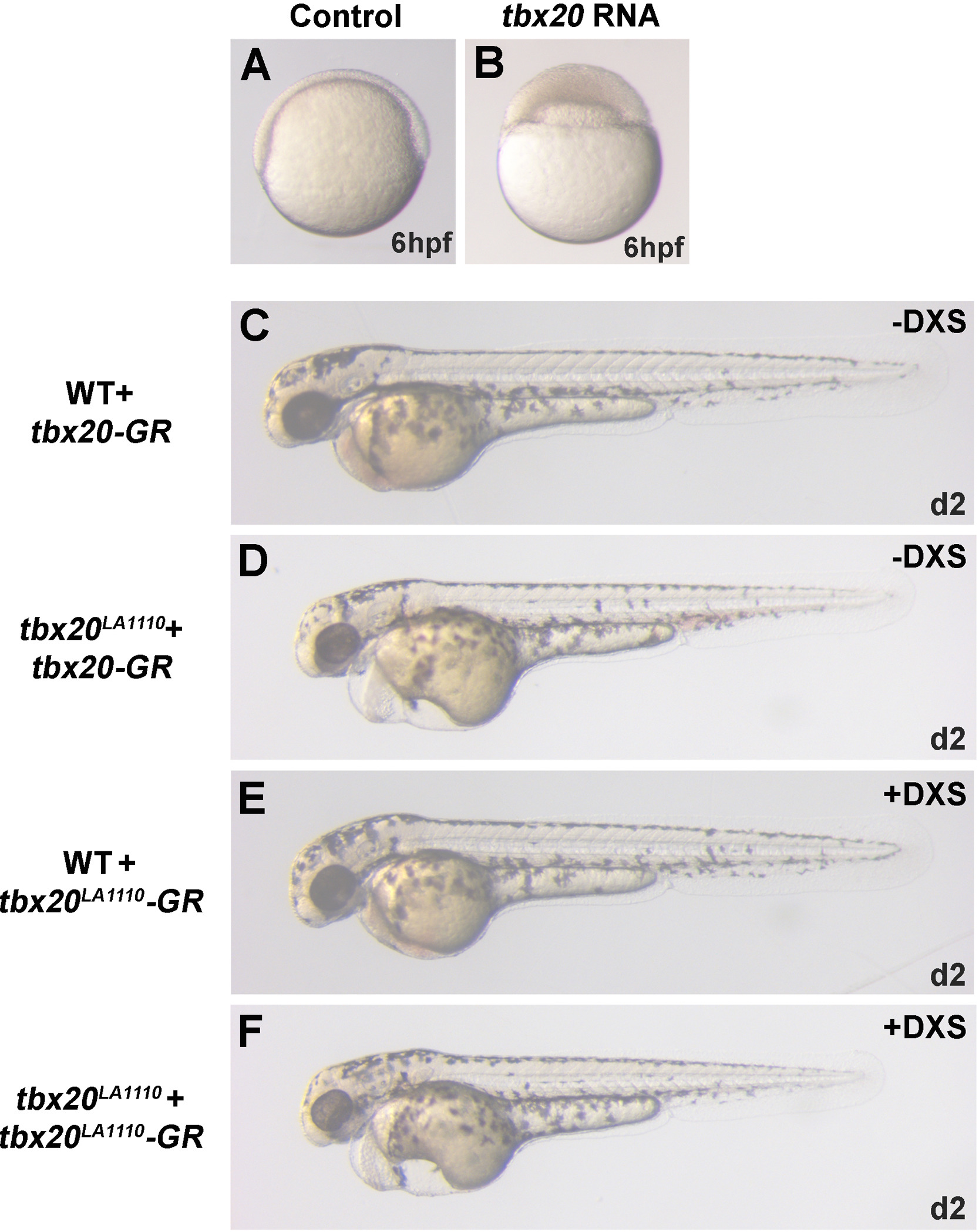Fig. S3
Tbx20 and Tbx20-GR overexpression phenotypes. (A and B) Uninjected control embryos (A) have begun to gastrulate by 6 h post fertilization, but overexpression of Tbx20 by injection of tbx20 mRNA disrupts gastrulation (B). (C and D) In the absence of DXS, 23.5% (12 out of 51 embryos from the tbx20LA1110 heterozygous crosses) of tbx20-GR injected embryos showed a characteristic tbx20LA1110 cardiac edema phenotype (D), demonstrating a failure to rescue without DXS induction. The remainder of the embryos displayed normal morphology (C). (E and F) Tbx20LA1110-GR overexpression in the presence of DXS induction did not rescue tbx20LA1110 mutants or induce developmental abnormalities, as 27.6% (16 out of 58 embryos from the tbx20LA1110 heterozygous crosses) of the embryos displayed the characteristic tbx20LA1110 cardiac edema phenotype (F) while the remainder were morphologically normal (E).
Reprinted from Developmental Biology, 421(2), Lu, F., Langenbacher, A., Chen, J.N., Tbx20 drives cardiac progenitor formation and cardiomyocyte proliferation in zebrafish, 139-148, Copyright (2017) with permission from Elsevier. Full text @ Dev. Biol.

